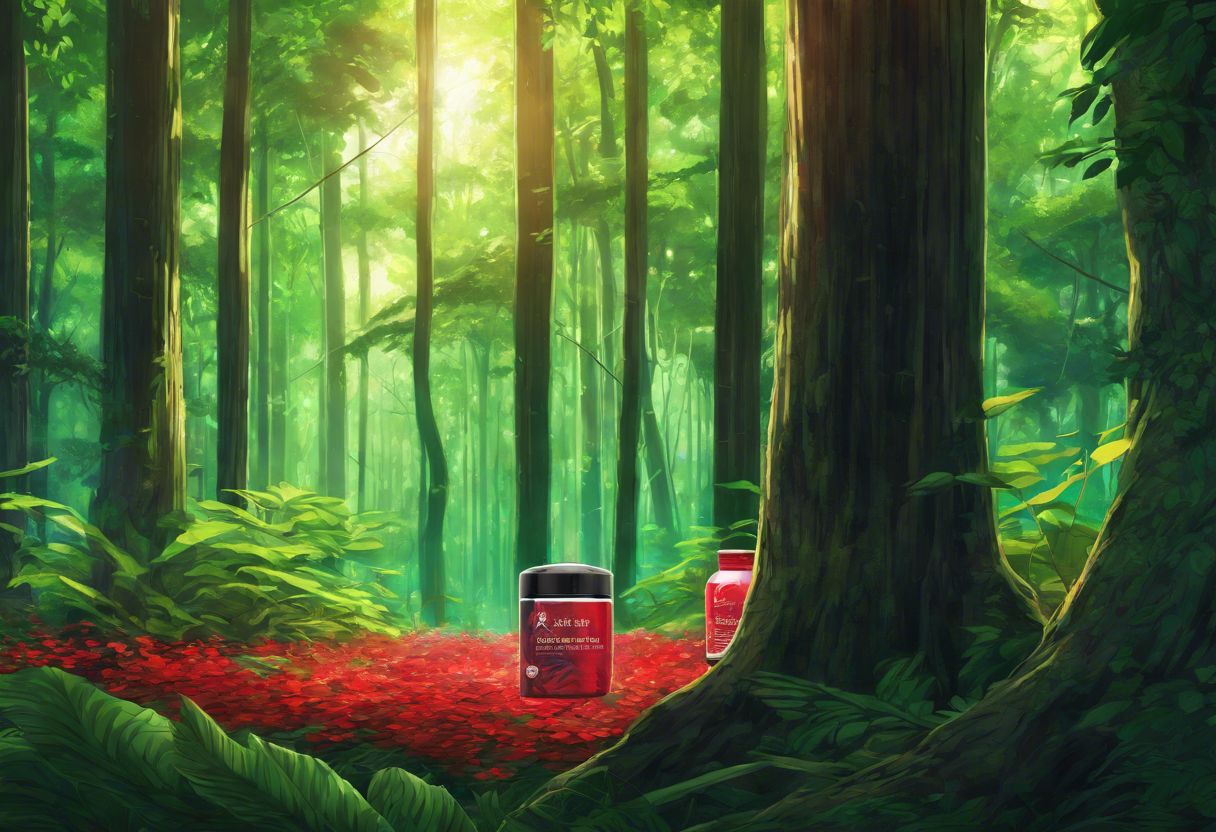Many people find themselves curious about the workings of a bong but may feel overwhelmed by its seemingly intricate design. Interestingly, bongs have been used for centuries as a popular method to smoke herbs.
This article will break down the operation of the humble bong, clarifying each part and function to demystify its use. Dive in to unveil the smooth world of water-filtered smoke!
Key Takeaways
- Bongs cool and filter smoke, which can make inhaling smoother.
- Key parts of a bong include the bowl piece, downstem, water chamber, percolator, and mouthpiece.
- Bongs have been used for centuries with origins in Asia and Africa; modern ones often feature glass designs.
- It’s important to clean your bong regularly to keep it working well and to avoid health risks.
- Despite being filtered by water, smoking from a bong is not safe from all harmful substances.
The History and Evolution of Bongs
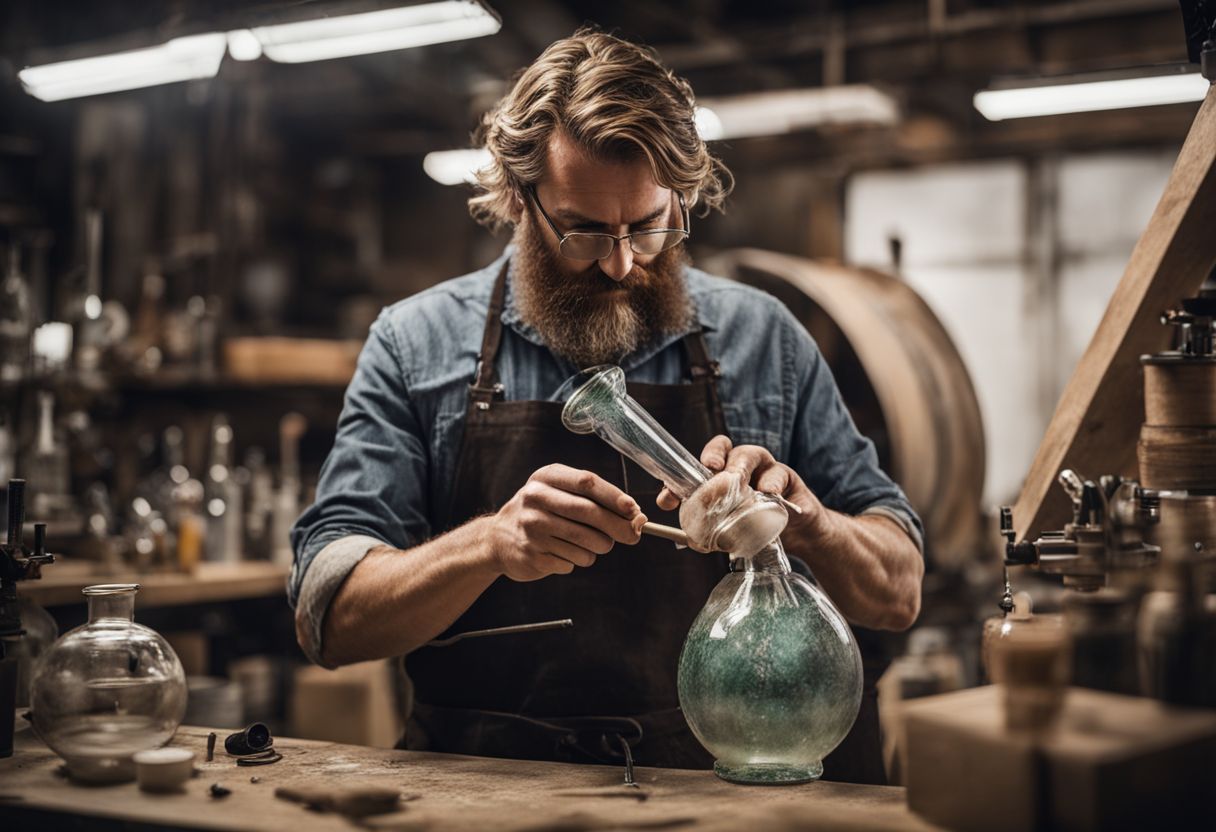
Bongs have a long history that dates back hundreds of years. They started in Asia and Africa where people made them from bamboo, ceramic, and even animal horns. Over time, the designs got better.
Humans found new materials like plastic and metal to make bongs with. But glass became the most loved because it didn’t change the taste of the smoke.
Today’s bongs are way different from old ones. They have fancy parts like percolators which make lots of little bubbles in the water when you use them. This helps cool down the smoke so it’s smoother when you breathe it in.
Artists now make bongs too, creating beautiful pieces that look great and work well for smoking weed or tobacco.
Now let’s dive into how water plays a role in making your smoking experience better with a bong.
Exploring the Purpose of Water in Bongs
Water in bongs is not just for show. It plays a key role in cooling and filtering the smoke before you inhale it. As the smoke passes through the water, some of the harmful particles get left behind.
This means you’re breathing in cleaner smoke.
The water chamber also helps to cool down hot smoke. Hot smoke can be harsh on your throat and lungs. But when it goes through the water, it cools off and feels smoother when you breathe it in.
So, the water makes smoking more comfortable and a bit cleaner too.
Bong Basics: Understanding the Anatomy
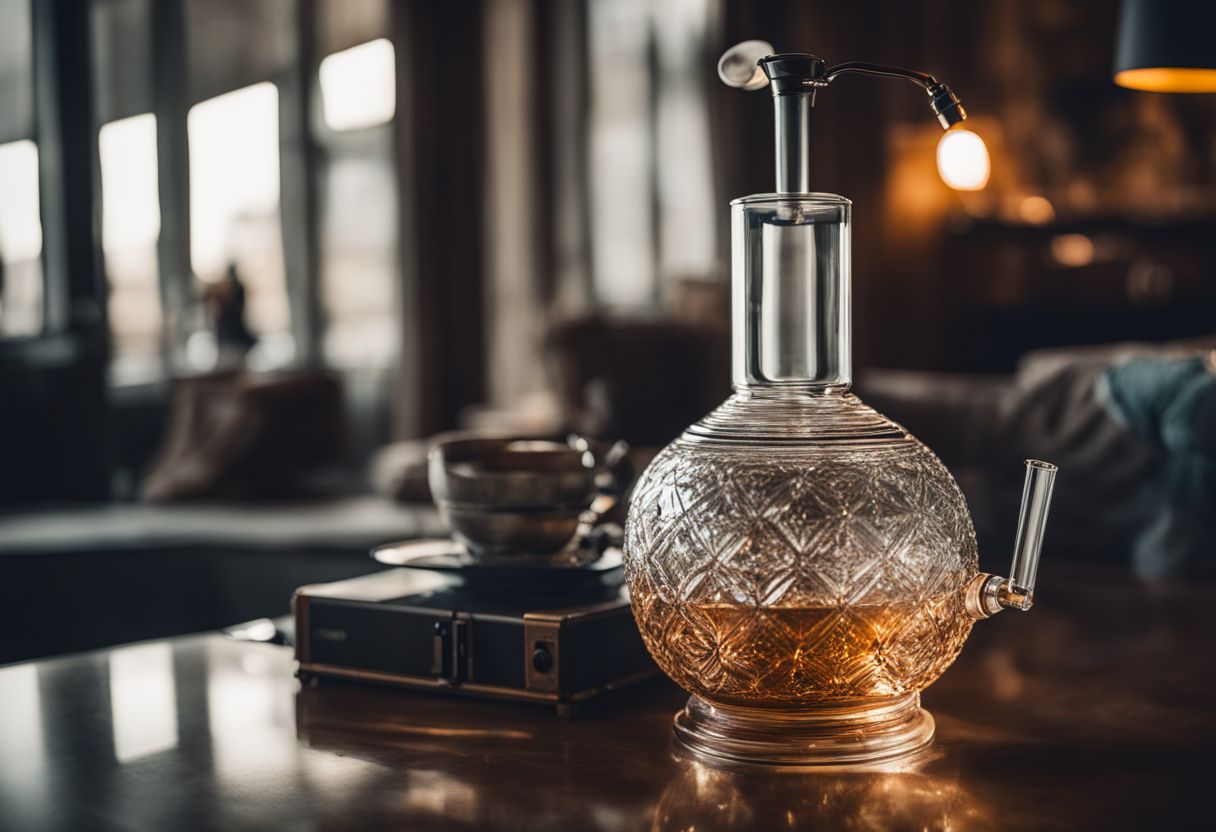
The anatomy of a bong includes the bowl piece, downstem, water chamber, percolator, and mouthpiece. Understanding how these parts work together is essential to maximizing your smoking experience.
To learn more about the intricacies of bong anatomy and functionality, keep reading for a comprehensive guide on how bongs work.
Bowl Piece
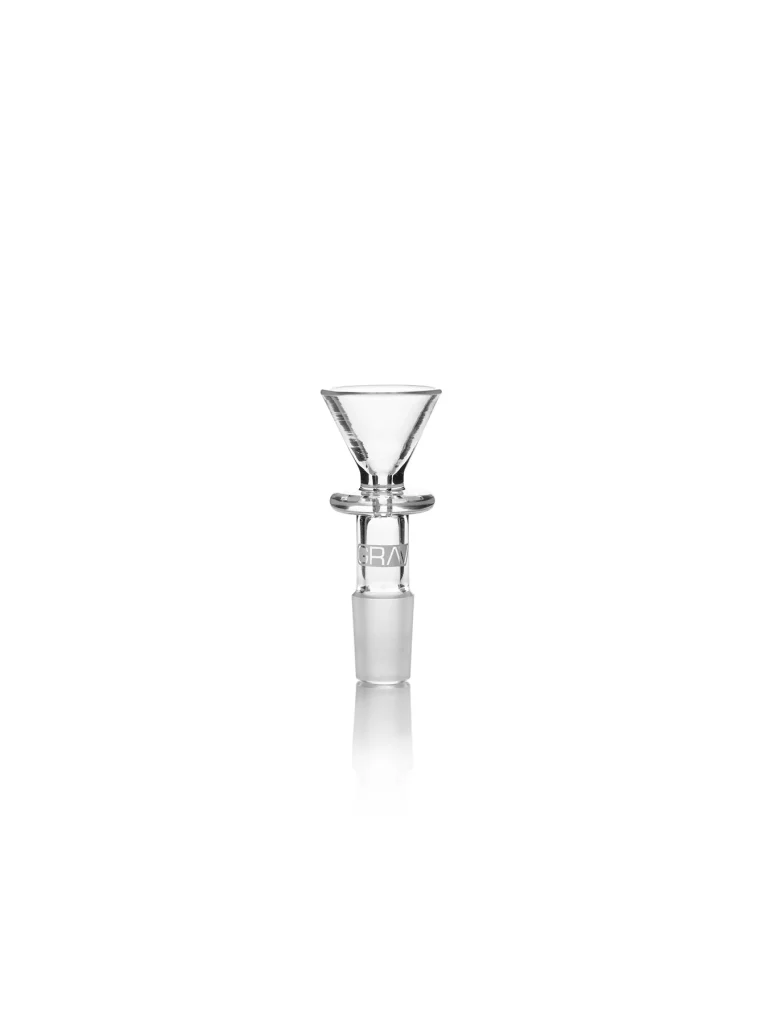
A bowl piece is a key part of a bong. You pack this small container with smoking material, like ground-up marijuana. It’s where the smoking starts. The bowl piece fits snugly into the downstem of the bong.
When you light it up, the smoke moves from here into other parts of the water pipe.
You need to handle the bowl piece carefully to fill and clean it without breaking it. Often made from glass, they can also come in metal or ceramic forms. Each has its own look but all do their job—hold your smoking cannabis securely for a good inhale.
Downstem
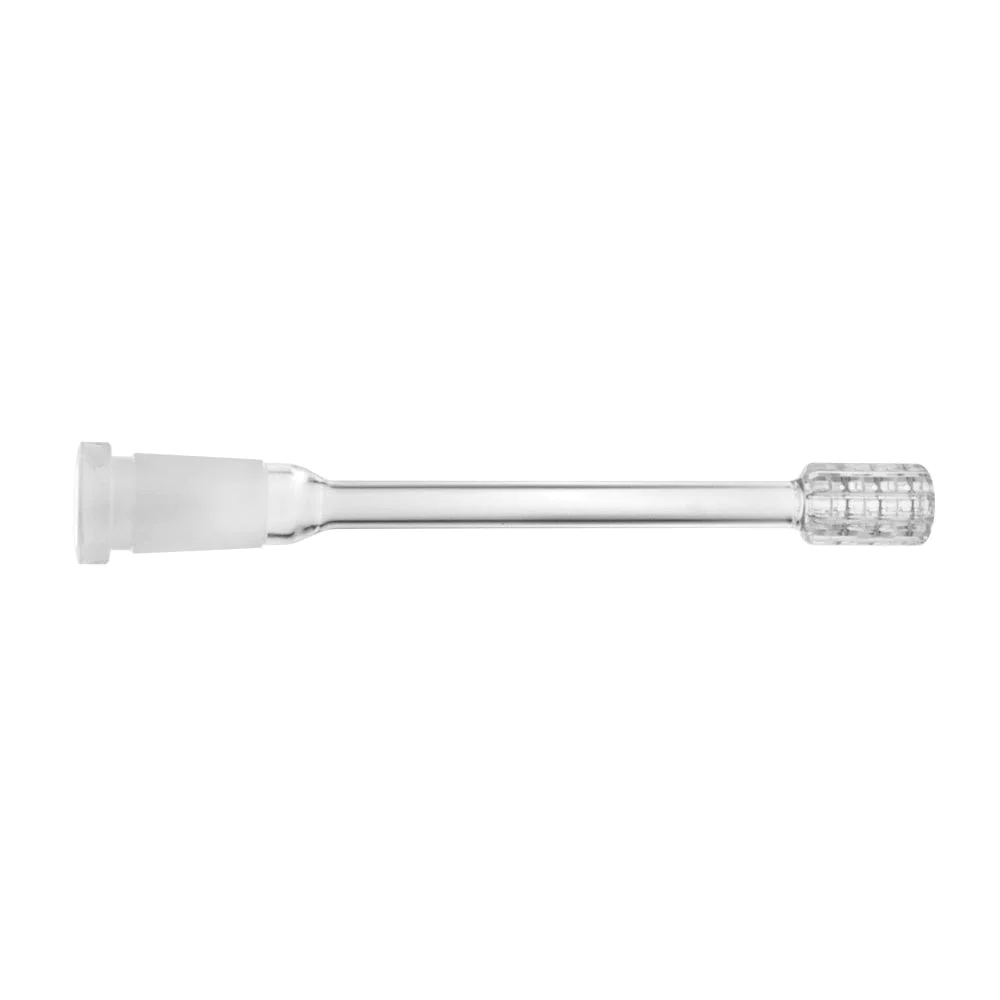
The downstem is a vital part of the bong, usually made of glass or silicone. It connects the bowl piece to the water chamber, allowing smoke to travel into the water for filtration.
When you inhale, the smoke travels from the bowl through the downstem and bubbles up through the water, which cools and filters it before reaching your lungs.
Many downstems have a diffuser at their end to break up smoke into smaller bubbles, increasing surface area contact with water for better filtration. The length and design of a downstem can affect how smooth your hits are by providing additional cooling and diffusion.
Water Chamber
After the smoke travels through the downstem, it enters the water chamber. The water in this part of the bong plays a crucial role in filtering and cooling the smoke. As the smoke bubbles through the water, it gets cooled down, making it smoother and less harsh to inhale.
This process also filters out some harmful substances before you inhale, providing a cleaner smoking experience.
The water chamber is an essential component of a bong that significantly impacts your smoking experience. Understanding how it works can help you appreciate its contribution to delivering a more enjoyable and filtered hit when using a bong for smoking purposes.
Percolator
The percolator is a key component of a bong, designed to further filter and cool the smoke as it moves through the water chamber. Its purpose is to break up the smoke into smaller bubbles, increasing the surface area for better filtration.
This results in smoother hits that are easier on the throat and lungs. The most common types of percolators include tree, honeycomb, inline, and showerhead designs, each offering unique benefits in diffusing and cooling the smoke before inhalation.
As the smoke passes through the percolator’s multiple openings or arms within the water chamber, it undergoes additional filtration, ensuring a cleaner and more enjoyable smoking experience.
Mouthpiece
The mouthpiece is the part of the bong where you put your lips to inhale. It’s usually at the top of the bong and can be made of glass, plastic, or silicone. The size and shape of the mouthpiece can affect how comfortable it is to use the bong.
When smoke travels through the bong, it flows up into the mouthpiece for inhalation. A wider mouthpiece allows for more airflow and a more comfortable experience when taking a hit.
On the other hand, a narrower mouthpiece may create a more concentrated stream of smoke, which some users prefer for stronger hits.
The Mechanics of Bong Functionality
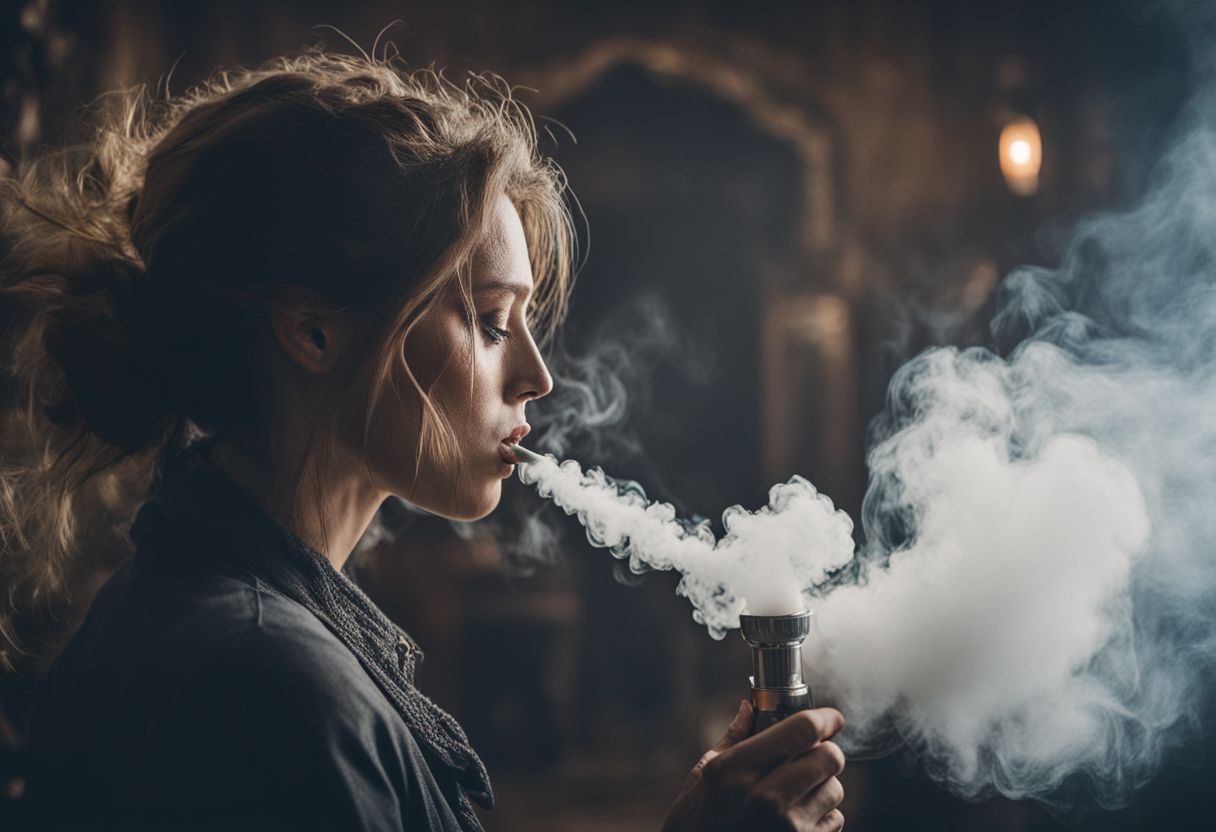
When smoke is drawn through the bong, it travels down the stem and into the water chamber, where it is filtered by the water before traveling up through the percolator for further filtration, resulting in a smoother hit.
Discover how these mechanics contribute to a better smoking experience by diving deeper into understanding bongs.
The Role of Water Filtration
Water filtration plays a crucial role in the function of a bong. When smoke passes through the water, it undergoes a process of cooling and filtration. The water acts as a barrier, capturing harmful substances and ash particles, thus preventing them from reaching the lungs.
The filtering action of the water helps to remove some of the potentially harmful toxins present in the smoke. This results in smoother, cleaner hits that are less harsh on the throat and lungs.
In essence, water filtration serves to provide a more enjoyable and safer smoking experience for bong users, reducing potential health risks associated with inhaling unfiltered smoke.
How Smoke Travels Through a Bong
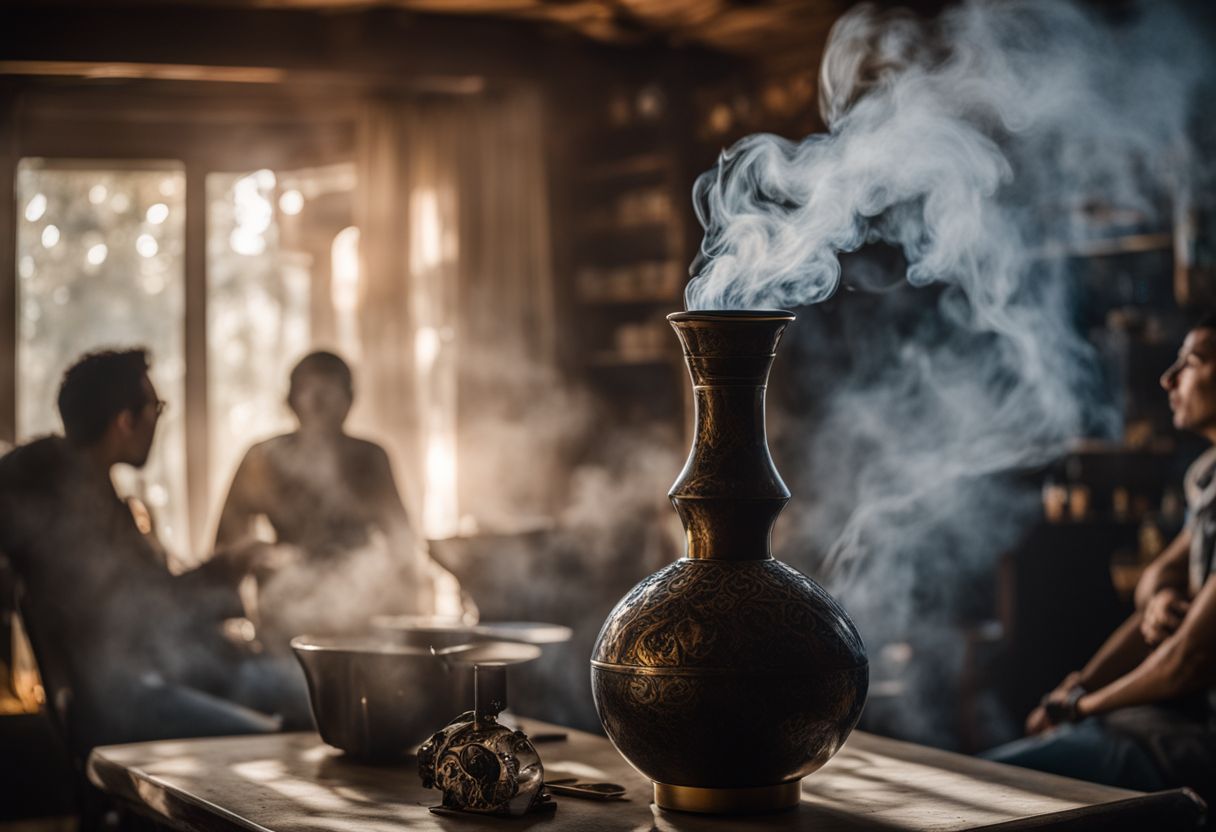
Smoke travels through a bong when the user inhales, creating suction that pulls the smoke from the bowl down into the water. As the smoke is drawn through the water, it gets cooled and filtered.
This process helps to remove some of the harshness from the smoke before it reaches the user’s lungs.
Once it passes through the water, the smoke moves up through the mouthpiece and into the user’s mouth and lungs. The cooling effect of passing through water can make inhaling smoother for users compared to other smoking methods.
The Benefits of Using a Bong
Using a bong offers smoother hits and filtration of smoke, resulting in a more enjoyable smoking experience. Additionally, bongs provide aesthetic and customization options for users to personalize their smoking sessions.
Smoother Hits
Smoother hits are one of the main benefits of using a bong. The water in the bong helps to cool down the smoke, making it less harsh on your throat and lungs. This cooling effect can make the smoking experience more enjoyable for many people.
Additionally, as the smoke passes through the water, it filters out some of the ash and tar, resulting in a cleaner and smoother inhalation. This is particularly beneficial for individuals who may have sensitive respiratory systems or find traditional smoking methods too harsh.
Overall, smoother hits from a bong can contribute to a more comfortable and pleasant smoking experience.
Filtration of Smoke
Smoke filtration in bongs is an essential aspect of the smoking experience. When you inhale from a bong, the smoke travels through the water in the chamber. As it passes through the water, some impurities and particles get filtered out, resulting in a smoother and cleaner inhalation.
The water in the bong helps to cool down the smoke as well. This cooling process makes the smoke less harsh on your throat and lungs compared to inhaling directly from a joint or pipe.
Additionally, some bongs have percolators that further filter and diffuse the smoke for an even smoother hit, enhancing your smoking experience while reducing potential harm to your lungs over time.
Aesthetic and Customization Options
Bongs offer a wide range of aesthetic and customization options, allowing users to express their personal style. From intricate designs and patterns to varying sizes and shapes, bongs come in different materials like glass or silicone, catering to individual preferences.
Some bongs also feature unique accessories such as LED lights or customized mouthpieces, adding a touch of personalization. The diversity in aesthetics and customizable features enables users to select a bong that not only suits their smoking needs but also reflects their personality and tastes.
Moving on from the diverse aesthetics and customization options available for bongs, let’s delve into how to properly use a bong, including step-by-step usage guide and maintenance tips.
How to Properly Use a Bong

To properly use a bong, start by filling the water chamber with enough water to cover the downstem. Grind your dry herb and pack it into the bowl piece before lighting it. As you inhale, the smoke will travel through the water and into your lungs, providing a smoother and more enjoyable experience compared to other smoking methods.
Remember to clean your bong regularly to ensure optimal performance.
Step-by-Step Usage Guide
Using a bong can seem complicated at first, but it’s actually quite straightforward. Here’s a step-by-step guide to using a bong effectively:
- Fill the water chamber with enough water to cover the bottom of the downstem.
- Grind your herb and pack it into the bowl piece, ensuring an even burn.
- Hold the bong firmly and place your mouth on the mouthpiece.
- Light the herb in the bowl while inhaling gently through the mouthpiece.
- As you inhale, watch as the smoke travels through the water, cooling and filtering it.
- Once enough smoke has been generated, remove the bowl piece and inhale deeply to clear the chamber.
- Exhale and enjoy your smooth hit.
Bong Maintenance Tips
Proper maintenance of your bong is essential to ensure optimal performance and longevity. Here are some effective bong maintenance tips:
- Regular Cleaning: Clean your bong after every use to prevent resin buildup and maintain the flavor of your smoking experience. Use a cleaning solution specifically designed for bongs or a mixture of isopropyl alcohol and coarse salt for effective cleaning.
- Change the Water: Always start with fresh water in the water chamber to ensure a clean and smooth smoking experience. Stale water can affect the flavor and quality of the smoke.
- Inspect for Damage: Regularly inspect your bong for any cracks, chips, or damage to the glass or components. Address any issues promptly to prevent further damage.
- Store Properly: When not in use, store your bong in a secure location where it won’t be easily knocked over or damaged. Consider using a protective case if you need to transport it.
- Replace Parts as Needed: Over time, certain parts like the downstem or bowl piece may wear out. Regularly check these components for wear and tear, replacing them as necessary to maintain functionality.
- Avoid Extreme Temperatures: Glass can be sensitive to sudden temperature changes. Avoid subjecting your bong to extreme hot or cold temperatures, as this can lead to cracks or breakage.
- Dry Components Thoroughly: After cleaning, make sure all components are thoroughly dried before reassembling your bong. This prevents mold and mildew from forming inside the chambers.
Common Myths and Misconceptions

There are several myths and misconceptions surrounding the use of bongs, including concerns about safety and health risks. In this section, we will address these misconceptions and debunk any false beliefs about using a bong for smoking marijuana.
Bong Safety Considerations
When using a bong, it’s essential to consider safety. First, always ensure the bong is placed on a stable surface to prevent accidental spills or tipping. Additionally, be cautious with the lighter or matches when lighting up and avoid leaning over the flame too closely.
It’s crucial to regularly clean your bong to prevent build-up of harmful bacteria and mold in the water chamber, which can be detrimental to lung health if inhaled.
Furthermore, never share mouthpieces with others as this can spread germs and increase the risk of infections. Lastly, use caution with hot smoke by taking smaller hits to avoid irritating your throat and lungs.
Debunking Bong Myths
Misconceptions about bongs often lead to myths, but let’s set the record straight. First off, using a bong doesn’t make smoking safe; it just cools the smoke down. There’s a belief that using a water filter eliminates all harmful substances from the smoke, which isn’t entirely true.
It’s crucial to understand that even with water filtration, some harmful particles can still reach your lungs. Plus, there’s also a common misconception that using a bong is less addictive than other methods of smoking – not true! Addiction risk depends on various factors and isn’t solely determined by the method of consumption.
Let’s bust these myths and get to know the real deal.
Conclusion
In conclusion, understanding how bongs work empowers users to make informed choices. Exploring the mechanics and benefits sheds light on their functionality. With proper usage and maintenance, bongs can offer a smoother and filtered smoking experience.
Debunking myths ensures safety awareness in enjoying this method of consumption. By providing factual information, this comprehensive guide aims to enhance knowledge about bongs.
If you’re curious about the deeper history of bongs, discover when and where these fascinating devices were invented.
FAQs
1. What is a bong and how do you use it?
A bong is a special tool that people use to smoke weed. You fill it with water, light the weed on fire, and inhale the smoke through a tube.
2. Can using bongs be safer than smoking pot directly?
Some say using water bongs may trap bad stuff before it gets to your lung tissue, but there are still health risks of smoking either way.
3. Are there other ways to enjoy pot without smoking?
Yes! People can eat edibles or use vaporizers which turn the pot into vaporized air instead of inhaling smoke from burning it.
4. Do I need a head shop to buy a bong?
You don’t have to go to a physical store because many online smoke shops offer user-friendly mobile applications where you can log in and buy what you need.
5. Is every kind of pot-smoking legal in America?
Nope! Smoking pot for fun is illegal in some places but okay for medicinal purposes if approved by the US Food and Drug Administration (FDA).

